
Filter News
Area of Research
- (-) Fusion and Fission (30)
- (-) Materials (102)
- Advanced Manufacturing (22)
- Biology and Environment (24)
- Building Technologies (1)
- Computational Biology (1)
- Computational Engineering (1)
- Computer Science (9)
- Electricity and Smart Grid (1)
- Energy Science (154)
- Fuel Cycle Science and Technology (1)
- Functional Materials for Energy (1)
- Fusion Energy (10)
- Isotope Development and Production (1)
- Isotopes (26)
- Materials for Computing (16)
- National Security (25)
- Neutron Science (128)
- Nuclear Science and Technology (41)
- Nuclear Systems Modeling, Simulation and Validation (1)
- Quantum information Science (9)
- Supercomputing (83)
- Transportation Systems (2)
News Topics
- (-) 3-D Printing/Advanced Manufacturing (26)
- (-) Artificial Intelligence (10)
- (-) Isotopes (14)
- (-) Neutron Science (34)
- (-) Nuclear Energy (42)
- (-) Quantum Science (11)
- (-) Transportation (16)
- Advanced Reactors (10)
- Big Data (2)
- Bioenergy (11)
- Biology (5)
- Biomedical (8)
- Buildings (5)
- Chemical Sciences (34)
- Clean Water (3)
- Composites (9)
- Computer Science (19)
- Coronavirus (4)
- Critical Materials (13)
- Cybersecurity (4)
- Education (1)
- Energy Storage (35)
- Environment (17)
- Exascale Computing (3)
- Fossil Energy (1)
- Frontier (4)
- Fusion (27)
- Grid (6)
- High-Performance Computing (6)
- Irradiation (1)
- ITER (6)
- Machine Learning (5)
- Materials (74)
- Materials Science (80)
- Mathematics (1)
- Microscopy (27)
- Molten Salt (3)
- Nanotechnology (39)
- National Security (3)
- Partnerships (13)
- Physics (29)
- Polymers (17)
- Quantum Computing (3)
- Security (4)
- Simulation (4)
- Space Exploration (3)
- Summit (2)
Media Contacts
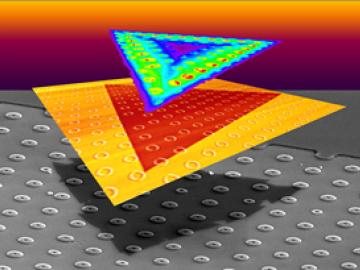
A team led by scientists at the Department of Energy’s Oak Ridge National Laboratory explored how atomically thin two-dimensional (2D) crystals can grow over 3D objects and how the curvature of those objects can stretch and strain the
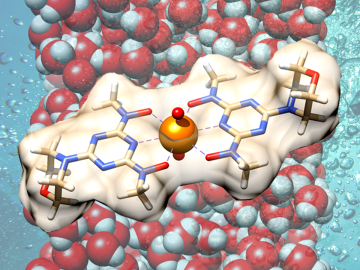
Scientists have demonstrated a new bio-inspired material for an eco-friendly and cost-effective approach to recovering uranium from seawater.

OAK RIDGE, Tenn., May 7, 2019—Energy Secretary Rick Perry, Congressman Chuck Fleischmann and lab officials today broke ground on a multipurpose research facility that will provide state-of-the-art laboratory space
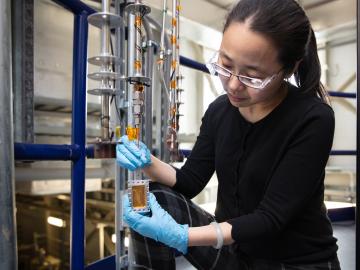
Researchers at the Department of Energy’s Oak Ridge National Laboratory, Pacific Northwest National Laboratory and Washington State University teamed up to investigate the complex dynamics of low-water liquids that challenge nuclear waste processing at federal cleanup sites.
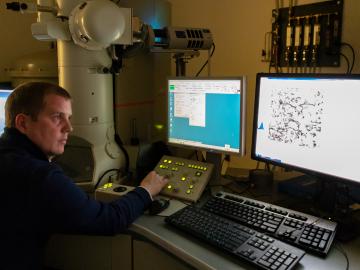
Kevin Field at the Department of Energy’s Oak Ridge National Laboratory synthesizes and scrutinizes materials for nuclear power systems that must perform safely and efficiently over decades of irradiation.
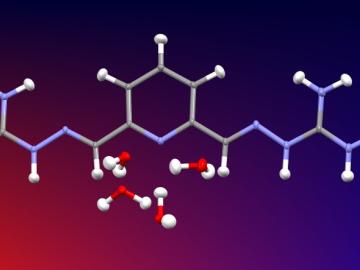
Researchers used neutron scattering at Oak Ridge National Laboratory’s Spallation Neutron Source to investigate the effectiveness of a novel crystallization method to capture carbon dioxide directly from the air.

Scientists have tested a novel heat-shielding graphite foam, originally created at Oak Ridge National Laboratory, at Germany’s Wendelstein 7-X stellarator with promising results for use in plasma-facing components of fusion reactors.
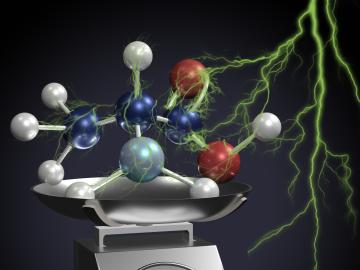
OAK RIDGE, Tenn., Jan. 31, 2019—A new electron microscopy technique that detects the subtle changes in the weight of proteins at the nanoscale—while keeping the sample intact—could open a new pathway for deeper, more comprehensive studies of the basic building blocks of life.

Oak Ridge National Laboratory scientists studying fuel cells as a potential alternative to internal combustion engines used sophisticated electron microscopy to investigate the benefits of replacing high-cost platinum with a lower cost, carbon-nitrogen-manganese-based catalyst.

A team of scientists has for the first time measured the elusive weak interaction between protons and neutrons in the nucleus of an atom. They had chosen the simplest nucleus consisting of one neutron and one proton for the study.


